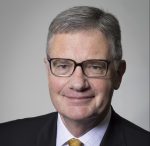
Teaching is a third career for me. And, as a “baby boomer,” I have plenty of experience to share with students that, I hope, brings the subject matter to life and helps them form a bridge between class materials and their practical application.
I have learned to keep my reminiscences about the introduction of new technology to myself (I still recall the ‘wow’ of seeing my first fax). However, I make good use of some patterns of organizational life I have noticed over the years. Far from being antiquated, these patterns seem more relevant than ever in today’s ever-changing, complex and ambiguous world of work.
Here, I share two methods of personal or professional development you can use individually or with your team.
Developing capabilities
First, the 70:20:10 model proposes a framework that usefully guides development investment and attention. Seventy percent of our capability is derived from experience, 20% from our interactions with influential people (a great boss or a mentor) and 10% from formal, off-the-job training and education.
As I reflect on my three careers, this distribution seems sound, with the proviso that it makes sense retrospectively, which suggests many missed experiential opportunities along the way. It is important to mention, as statistician George E. P. Box said, “all models are wrong, but some are helpful,” so the percentages are indicative but certainly helpful.
Of course, these modes of development are integrated and affect one another. For example, a mentor helps his mentee extract more takeaways from a challenging assignment. Meanwhile, an Executive MBA student brings her work experience to the classroom, deriving greater value from the materials because of her background, while also contributing significantly to her fellow students’ education.
So, now what? How can we apply the 70:20:10 model? Use “real work” as an ongoing development opportunity. Encourage individuals to share their experiences and learning with one another; find opportunities for them to participate in working groups, particularly ones that cross organizational boundaries; and find opportunities to increase the amount of autonomy in a role where the individual is ready, willing and able, for example, by implementing their ideas for continuous improvement.
Support your team members’ development activities with coaching support and ask periodically how they are building their capability and thereby becoming more valuable in the world of work. If an individual is ready for a bigger role, find a way to make that happen (the organization chart is just a snapshot in time). If you don’t, someone else will.
Learning through experience
The second pattern concerns how experience translates into enhanced capability. What seemed like a process of osmosis was clarified for me when I was introduced to David Kolb’s learning cycle. In practical terms, his model is simply:
- Act
- Reflect
- Learn
- Adapt
- Act again (but slightly differently because of the adaptation)
Like learning to drive (I still remember a somewhat hair-raising first lesson) or better navigate organizational politics (“Why was my great idea not accepted?”), building capability happens a step at a time. Reflection is the component that holds the model together, assuming developmental readiness on the part of the individual, of course.
The ability to learn from experience is a vital skill, and as Kolb’s cycle lays out, reflection is necessary to access the new knowledge. To borrow from Shakespeare’s Hamlet, reflection, in my experience, is “more honored in the breach than the observance” because it requires investing time without an obvious short-term payoff. When something hasn’t worked well, there’s also a level of discomfort in asking the ultimate accountability question: “What is it about what I did that caused me to get that result?” Although, I should quickly add that things that go well should also be subject to reflection.
Perhaps there is uncertainty about how to reflect? When looking back on successes or failures, the key is to be deliberate about asking and answering “what happened and why” to find what you can learn and use next time around. I recommend writing notes in a journal, which will enable you to reread, refresh your thinking about your development and more easily extract value from the time you’ve invested. If making notes is not your thing, simply talking an experience through with someone helps make sense of the experience. In a perfect world, do both.
Learning and development have been an ever present backdrop to my work experience, and even with the advent of advanced technology and AI, they still seem compelling challenges for organizations in all sectors to address. Learning from experience and the role of reflection in building capability are timeless principles leaders can use to support the development of their teams and to personally set an example for others to follow.
Nick Everest brings more than 40 years of experience in working with a variety of organizations to his role as clinical assistant professor of organization and human resources in the University at Buffalo School of Management. In addition to teaching courses in consulting, workforce management and leadership development, Everest serves as faculty director of LeaderCORE™, a personal and professional development program for full-time UB MBA students.
